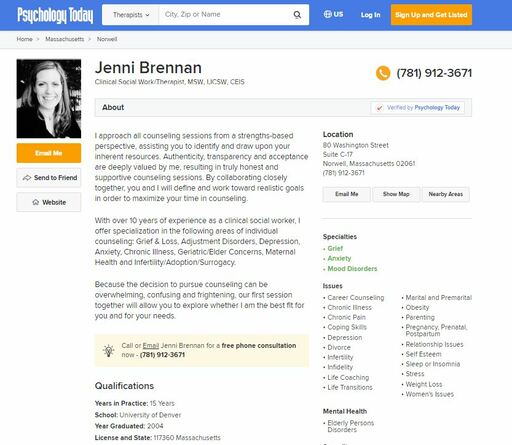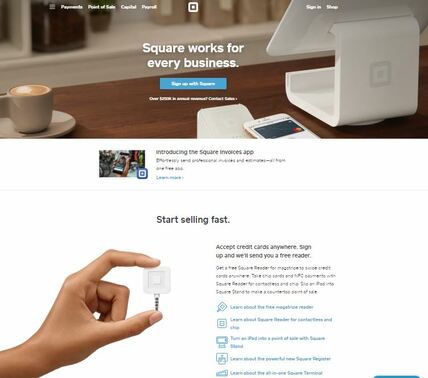Changing Perspectives Blog |
|
If you are a therapist, counselor or psychotherapist thinking about starting your own private practice, your head is probably filled with many questions:
All of these questions can be overwhelming, leaving many clinicians terrified about taking their first step. Take a deep breath, you've come to the right place! In this article, the first in a series of articles about starting your private practice, I will outline for you the top 9 steps to take to make your dream of operating your own private practice a reality. Step 1: Identify your niche This step may be the most difficult for many clinicians. We are trained to be open to helping and supporting everyone and our instinct may be to cast a very wide net. However, you should think about it from the perspective of the client. Imagine a client searching for a new therapist. Would they rather select a clinician who will see anyone or a clinician who specializes in the area in which they need support? Think back to your training and your professional work experiences. Where has most of your work centered? What types of clients and work bring you the most fulfillment and make you feel the most confident? Start with what you know! Remember, you can always change your specialties and niche at a later date. Step 2: Choose your space 
When you are first starting out, you may think that any office space that is affordable is a good option for you. While this might be good for your wallet, it may not be the best for your overall success.
Here are some things to consider when choosing your space: Location Think about the town or city in which you live. Do you want an office in the same location? If so, what is your plan for when you run into your clients and patients at the community library, supermarket or at your children's school? Would you rather set up your space somewhere outside of your town so that you reduce the chances of these interactions or are you comfortable with living and providing clinical services within the same town? Access How easily accessible is your potential office space for clients? Is it located near highways? Is there ample parking? Is it accessible for individuals with mobility needs? Where can clients wait for their session? Colleagues Would you rather operate in your own space completely or rent space where other clinicians are also providing therapy? How much value is there for you to be able to see and engage with other clinicians during your work day? Although I operate my own private practice, I have elected to rent space in a large suite with other mental health clinicians. This choice has proven to be great for me as it allows me increased connections for networking, provides limitless referral opportunities and has yielded some new friendships. Subletting vs. Leasing How many days per week do you want to see clients? When I first started my private practice, I chose to sublet an office space for two days each week but knew there would be a potential to rent a full-time office in the same suite in the future. It was important to me to have opportunities to expand my days with clients without having to completely relocate. Consider your future goals as well. Step 3: Choose and register your name Clinicians can get bogged down by this step, scared that their decision has to be perfect. Remember, you can certainly change the name of your practice in the future. Do you want to use a creative name for your business? Do you want to eventually bring other clinicians in to work under you? Do you want to utilize your name as your business? Any option can be a good option, but it can help to think a bit about your future goals before deciding on a name. Once you have selected your name, it is time to register that name with the government. I always recommend that people register for an Employee Identification Number (EIN) for tax purposes rather than their social security number as it helps to keep personal and professional finances separate. Click here to apply for your own EIN. The IRS has some good resources for individuals beginning their own business. Click here to read through some of their information and tips. In addition to registering your business name with the IRS, you will also need to register your business name with the town or city in which you will be providing services. This process is commonly referred to as a Doing Business As Form or DBA Form. Click here and search "file a DBA in (your state)" to find state specific information for how to file a DBA form. Step 4: Advertising Once you have determined what type of services you will provide in your private practice, where you will provide them and registered your private practice name, it is time to start advertising your services. By far, the most lucrative advertising service for me has been to register with Psychology Today. Psychology Today, the #1 source of online referrals for therapists, allows each private practice clinician to create their own profile which will appear in search engines like Google. Once you create your profile, Psychology Today does the work for you! Get 6 months free with Psychology Today when you use this link. Another great way to advertise your business is to create a website that tells about your background, areas of specialty, practice approach and location. Your website can be as simple or as detailed as you would like it to be and you do not need to have any background in website design. I have been using Weebly for over 3 years now and have found their interface to be extremely simple. Use this link to save 10% on your first paid subscription with Weebly for your website. Lastly, don't forget about social media. Facebook, Instagram and Twitter can all be effective ways to get your business name and services out there in the public eye. I strongly suggest having any social media profile you create for your business be completely separate from any personal social media accounts you may have. Step 5: Protect yourself We insure almost everything these days from cars to homes to apartments to our health. Your private practice is no exception. Contact a variety of insurance companies to obtain quotes on insurance coverage options for your small business. In addition, research options for professional liability insurance. Often your credentialing or licensing authority can recommend a few companies for you that will provide you with protection should a client or patient ever bring legal action against you. Many clinical social workers, including myself have found wonderful liability insurance with NASW Assurance Services. Don't put everything you've worked so hard to build at risk by skipping this step! Step 6: Pursue credentialing with insurance companies or Employee Assistance Programs By far the easiest income method when in private practice is through patients and clients who pay privately out of pocket. However, it is becoming increasingly difficult for individuals to afford to pay full cost without some assistance from insurance. It's best to not put all your eggs in one basket. So, while you should certainly try to bring in a client base that will pay privately, it is also a good idea to become credentialed with at least one insurance company or employee assistance program. Perform a search of health insurance companies in your state and then review their behavioral health credentialing process. Many insurance companies are now utilizing a central credentialing process with CAQH ProView. CAQH can be a great first place to go when interested in pursuing insurance credentialing. Step 7: Determine payment methods How will your patients and clients pay you? Are you going to require cash only? What about checks? Are you open to clients and patients using credit cards via programs like Square or PayPal? What about even newer methods of payment like Venmo? I can tell you that the more options you offer, the more likely it is that your patients and clients will be able to pay you at the time of their session, cutting down on the amount of time you will spend chasing down unpaid bills. My client base is a complete mixture of payment via all of the previous methods and they appreciate the option to pay in whatever method works best for them. If you are interested in learning more about Square to process credit card payment, use this link to receive free processing on up to $1000 in sales with Square.
Step 8: Develop record keeping and billing One of the most important aspects of your work will be to maintain HIPAA Compliance with your record keeping. To do this, I have eliminated all paper records. The only paper files I have for my clients is a file folder with their first name, a tracking sheet of their appointment dates and some notes about their homework for the week. Everything else is tracked electronically. While there are a wide variety of programs to choose from for electronic record keeping and billing, my first choice is Simple Practice.. Simple Practice allows you to easily manage everything from appointment scheduling to documentation of sessions to billing and even communication with your clients via HIPAA compliant messaging. With tons of session note templates, treatment plan resources and private practice form templates, Simple Practice is everything it says it is - simple. Use this link to save $50 on a paid Simple Practice account. Step 9: Create your forms The final step before you start seeing your new clients and patients is to make sure you have all of your paperwork in order. You will want to make sure that you have, at a minimum, the following forms ready for your clients to review and complete:
Creating these forms can take some time. If you don't want to recreate the wheel, take advantage of pre-made forms. Click here to view forms for purchase. These are forms that I use in my own practice. When you purchase one of more of these forms, the work is done for you! A Word document version of the form will be emailed to you within 24 hours of purchase and all you need to do is add in your own practice information, change any details you wish to change and maybe add your logo. By following these 9 steps, you can quickly start your private practice and get on the road to meeting your goals! Why wait any longer?
Stay tuned for more articles and resources to help you build your private practice. If you are in need of more support right now, click here and I would be happy to build a customized support plan for you
2 Comments
3/2/2021 02:47:55 pm
I like how you said that one of the first things you need to do when starting a private practice is to choose and register your name with the IRS. I think that a great way to start a private practice efficiently and follow these steps is to invest in a company that specializes in start-ups for these practices. Thank you so much for all of your tips for starting a private practice quickly.
Reply
Jenni
3/2/2021 03:20:53 pm
Happy to be a resource always :)
Reply
Your comment will be posted after it is approved.
Leave a Reply. |
About Changing PerspectivesI often find myself encouraging people to consider changing their perspective or reframe the way in which they view things. This blog is an extension of that practice and is also an opportunity for me to write from a number of different perspectives including clinician, educator, mother, friend and supervisor. Blog topics are also quite varied and changeable. Topics explored include, but are certainly not limited to, grief, parenting, health and wellness and relationships. Join me and explore a number of changing perspectives! Categories
All
Archives
April 2020
|

 RSS Feed
RSS Feed







